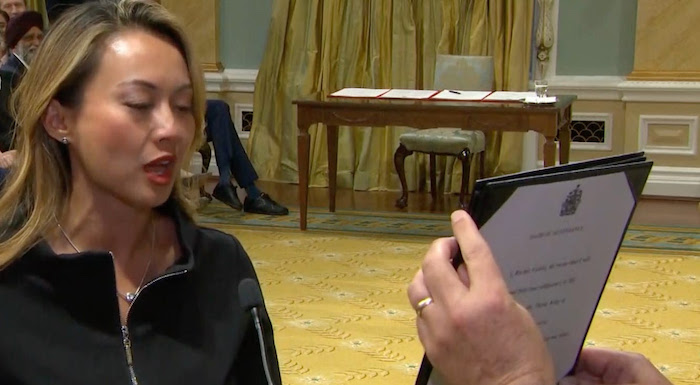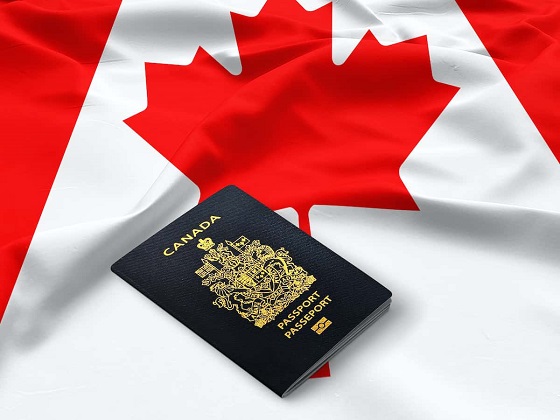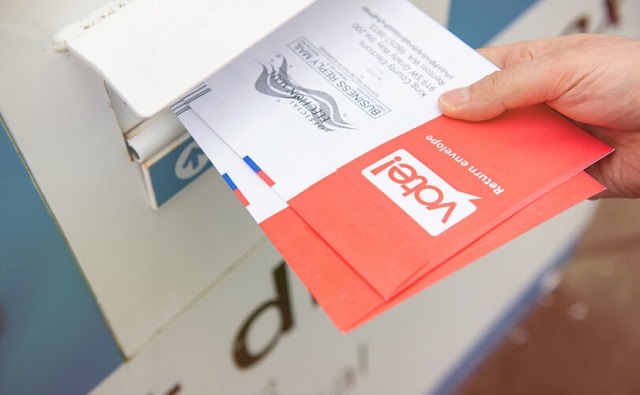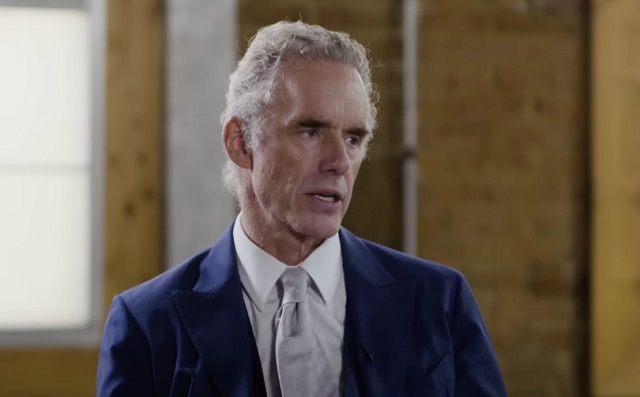National
Paul Wells on PM Trudeau’s cabinet shake up

Rechie Valdez teared up a bit taking her oath. It was nice.
Posted with permission from Substack author Paul Wells
The army you have
Exciting new combinations of Liberals and syllables
I skipped almost the entire cabinet-shuffle business on Wednesday. I think I’ve mostly managed to avoid getting jaded in this job, but there are days, boy howdy. Welcome, Minister Blah Blah Blah to the crucial office of Provision, Preparedness, Children and Popular Song. Congratulations, hug your kids. Next.
Then here was Rechie Valdez’s voice catching as she took the oaths (one for entry into the Council of the Elders and the other to join the Resonant Circle of the One, or whatever) and for just a minute, boredom took a holiday. The people who do these jobs should be emotional about them. Optimism is a good thing. Small businesses are definitely on the list of things worth caring about. Go get ’em, minister.
Paul Wells is a reader-supported publication. To receive new posts and support my work, consider becoming a free or paid subscriber.
A foolish consistency is the hobgoblin of days like this. During the 2021 campaign, when things were going badly, the official line out of the Trudeau brain trust was that the prime minister “doesn’t do shakeups.” And yet here’s one now. What’s changed?
There are always two ready answers to such a question. For one, the world has changed, as it always does. Previous shuffles addressed the astonishing 2016 votes for Brexit and Trump, and the less epochal but still significant election of Doug Ford as Ontario premier in 2018. In late 2021, when Trudeau was randomly firing one of the most experienced ministers in his cabinet, it might still have been possible to believe the PM’s third term in office wouldn’t be dominated by Russia, China, and the knock-on effects from a sharp increase in immigration. The misplaced optimism of that bygone era 20 months ago can no longer be maintained.
Second, the electoral context has changed. “We have all the time in the world before the next election” has become “We sure don’t,” and the readers who get cross when I link to horse-race polls are going to hate clicking on this.
I guess this shuffle is designed to address the Poilievre threat? Kind of? Listlessly? A year ago Trudeau was already getting advice to make sharp, noticeable changes in his team, message and style. (Yes, I just linked to myself.) Today he put Sean Fraser in charge of Housing and Marc Miller in charge of Immigration. Those might be the two most encouraging moves among dozens, both for Liberals who hope “good communicators” won’t turn out to be a sad joke, and for citizens who hope strong administrators might, even if only occasionally, be put in charge of challenging files.
The rest of the day’s news is puzzling. Seamus O’Regan to Labour? I thought the boss liked him. Pablo Rodriguez to Transport would seem to be yet another case of ministerial burnout on all those Web Giant-Killer bills that have become the torment of a succession of Heritage ministers. Pascale St.-Onge replaces him on the censorship ‘n’ subsidies beat, ringing a new variation on the eternal question: Why do they call it Canadian Heritage if only ministers from Quebec are allowed to do the job?
Gary Anandasangaree at Crown-Indigenous Relations and Arif Virani as Minister of Justice and Attorney-General are two cases of rookie ministers promoted to tough jobs. I’ve heard good things about both of them. Both have relevant committee and parliamentary-secretary experience. Virani was Jody Wilson-Raybould’s parliamentary secretary; she seems not to have kept many fond memories. (In her memoir she calls him one of the “talking heads” who were sent out “to make comments that evidence has now shown were not accurate or right.” In general, Trudeau, a non-lawyer mostly counselled by non-lawyers, seems to be chronically unsure why he should have a justice minister or what they are good for.)
Freeland, Guilbeault, Champagne and Joly remain in their previous jobs, evidence of their clout. On the other hand, I maintain that Rodriguez’s being shuffled was evidence of his clout. By now it’s clear that Freeland writes her own rules: she does the work she wants to do, to varying degrees of success, and nobody in this government can make her do anything else. Her fate is bound up with the prime minister’s. Probably neither of them expected it, but the stability of the tandem is now part of Trudeauworld’s game physics.
Cabinet shuffles defy confident prediction, or should. Will Jean-Yves Duclos make a difference as Public Services and Procurement Minister? He should. He’s a detail man in a detail job. But ministers are rarely better than they are permitted to be by circumstances and by the circle around the PM. Duclos will shine if this government wants to buy stuff, and not if it doesn’t.
That 2021 bit of campaign spin wasn’t entirely false. In some ways this prime minister really doesn’t do shakeups. He keeps his chief of staff, his indispensable deputy, his own way of thinking and talking about his government. Everything else swirls around. He came to office promising real change. Increasingly what’s real is what doesn’t change.
Paul Wells is a reader-supported publication. To receive new posts and support my work, consider becoming a free or paid subscriber.
Invite your friends and earn rewards
Frontier Centre for Public Policy
How much do today’s immigrants help Canada?

From the Frontier Centre for Public Policy
Newly arriving immigrants require housing, infrastructure and services right away. But even including other construction workers with the 2 percent who are qualified, working-age artisans, immigrants don’t come close to building the housing they occupy. Along with paying taxes to support new arrivals, oppressive housing and living costs then deter procreation for many would-be parents in the existing population.
The relationship between GDP, productivity, and immigration
It is almost universally accepted that Canada needs immigration and the corresponding population increase to keep the economy going. That is how experts say we are supposed to get economic growth along with improvements in productivity and higher per capita GDP.
But how much of that is true?
First, GDP as a measure of economic activity and national prosperity has limitations. Adjusted for both inflation and the increase in Canada’s population, per capita GDP was in free fall in 2022 and 2023—at minus 2.6 and minus 3.9 respectively.
GDP says nothing about its distribution among the population. Inflation enriches those who own housing and other hard assets, but leaves behind those who do not own them. Notably, with demand overwhelming supply, immigrants’ housing needs and other requirements generate inflation and widen the gap between rich and poor.
It is also necessary to consider what GDP comprises. There is a rough and ready distinction between investment and consumption although the distinction is fuzzy. Broadly speaking, new and more efficient machinery improve productivity, enabling workers to deliver more value for the time they spend working. The consumption part of GDP includes a long list of activities necessary for sustaining life—everything from buying groceries to fixing broken windows, retailing goods made in China, and maintaining the superstructure of government.
Conventional wisdom is that immigration is necessary to make up for the decline in the home-grown population resulting from the birth rate below replacement. But that represents a vicious circle. Much of Canada’s GDP involves building homes and infrastructure, and supporting immigrants—all consumption components. Newly arriving immigrants require housing, infrastructure and services right away. But even including other construction workers with the 2 percent who are qualified, working-age artisans, immigrants don’t come close to building the housing they occupy. Along with paying taxes to support new arrivals, oppressive housing and living costs then deter procreation for many would-be parents in the existing population.
Many employers and politicians promote immigration. That is because immigrants tend to be more industrious and reliable than young home-grown Canadians. Immigrants and their children are generally prepared to work at current pay rates without clock-watching. And there is less pressure to install labour-saving equipment when a pool of people is ready and willing to work for what they get paid.
It’s also necessary to consider that for decades, technology, robots, and more efficient use of labour have been eliminating jobs. Some estimates have it that up to a third of all current jobs will disappear over the next 10 to 15 years. All this said, I look to history and other countries for how changes in population impact productivity and community well-being. In recorded history, the biggest advances in real per capita income occurred in Europe after the bubonic plague killed about half the population between 1347 and 1352. The shortage of labour made workers much more valuable. Feudalism ended and there was a huge surge in wages rates and women’s rights.
In recent times, the population of Japan has been expanding only slowly, and is declining now. In 2023, business capital investments hit a record high at US $223 billion, up 17 percent from the previous year. The question now is whether productivity gains will be enough to sustain its ageing and shrinking population. For Canada, in contrast, per capita business investment, adjusted for inflation and population, has been declining and was sharply lower in 2022-23.
There is another problem. Too many immigrants expect to take advantage of our generous welfare. It may cost $1,000 per person per month to support an immigrant who does not immediately get a job. That must be many times more than it costs to keep that person in a refugee camp.
Of course, Canada has the duty to take in refugees at risk of persecution. And, as Singapore does, employers should be able to hire immigrants for specific top-end jobs where Canada does not have the home-grown expertise.
It is no long-term answer to support people in camps. Troubled countries—Haiti, for example—need security and business investment to enable their self reliance. Countries like Canada need to generate their own wealth to make that possible and not just for the good of our own citizens. This requires diverting GDP back to the non-residential business investment that is the lifeblood of a healthy and sustainable economy.
Colin Alexander’s degrees include Politics, Philosophy, and Economics from Oxford. His latest book is Justice on Trial.
Business
Honda deal latest episode of corporate welfare in Ontario

From the Fraser Institute
By Jake Fuss and Tegan Hill
If Honda, Volkswagen and Stellantis are unwilling to build their EV battery plants in Ontario without corporate welfare, that sends a strong signal that those projects make little economic sense.
On Thursday, the Trudeau and Ford governments announced they will dole out an estimated $5 billion in corporate welfare to Honda so the auto giant can build an electric vehicle (EV) battery plant and manufacture EVs in Ontario. This is the third such deal in Ontario, following similar corporate welfare handouts to Volkswagen ($13.2 billion) and Stellantis ($15.0 billion). Like the previous two deals, the Honda deal comes at a significant cost to taxpayers and will almost certainly fail to create widespread economic benefits for Ontarians.
The Trudeau and Ford governments finalized the Honda deal after more than a year of negotiations, with both governments promising direct incentives and tax credits. Of course, this isn’t free money. Taxpayers in Ontario and the rest of Canada will pay for this corporate welfare through their taxes.
Unfortunately, corporate welfare is nothing new. Governments in Canada have a long history of picking their favoured firms or industries and using a wide range of subsidies and other incentives to benefit those firms or industries selected for preferential treatment.
According to a recent study, the federal government spent $84.6 billion (adjusted for inflation) on business subsidies from 2007 to 2019 (the last pre-COVID year). Over the same period, provincial and local governments spent another $302.9 billion on business subsidies for their favoured firms and industries. (Notably, the study excludes other forms of government support such as loan guarantees, direct investments and regulatory privileges, so the total cost of corporate welfare during this period is actually much higher.)
Of course, when announcing the Honda deal, the Trudeau and Ford governments attempted to sell this latest example of corporate welfare as a way to create jobs. In reality, however, there’s little to no empirical evidence that corporate welfare creates jobs (on net) or produces widespread economic benefits.
Instead, these governments are simply picking winners and losers, shifting jobs and investment away from other firms and industries and circumventing the preferences of consumers and investors. If Honda, Volkswagen and Stellantis are unwilling to build their EV battery plants in Ontario without corporate welfare, that sends a strong signal that those projects make little economic sense.
Unfortunately, the Trudeau and Ford governments believe they know better than investors and entrepreneurs, so they’re using taxpayer money to allocate scarce resources—including labour—to their favoured projects and industries. Again, corporate welfare actually hinders economic growth, which Ontario and Canada desperately need, and often fails to produce jobs that would not otherwise have been created, while also requiring financial support from taxpayers.
It’s only a matter of time before other automakers ask for similar handouts from Ontario and the federal government. Indeed, after Volkswagen secured billions in federal subsidies, Stellantis stopped construction of an EV battery plant in Windsor until it received similar subsidies from the Trudeau government. Call it copycat corporate welfare.
Government handouts to corporations do not pave the path to economic success in Canada. To help foster widespread prosperity, governments should help create an environment where all businesses can succeed, rather than picking winners and losers on the backs of taxpayers.
Authors:
-

 Automotive1 day ago
Automotive1 day agoThe EV ‘Bloodbath’ Arrives Early
-

 CBDC Central Bank Digital Currency18 hours ago
CBDC Central Bank Digital Currency18 hours agoA Fed-Controlled Digital Dollar Could Mean The End Of Freedom
-

 Business1 day ago
Business1 day agoHonda deal latest episode of corporate welfare in Ontario
-

 espionage1 day ago
espionage1 day agoOne in five mail-in voters admitted to committing voter fraud during 2020 election: Rasmussen poll
-

 Frontier Centre for Public Policy13 hours ago
Frontier Centre for Public Policy13 hours agoHow much do today’s immigrants help Canada?
-

 Brownstone Institute17 hours ago
Brownstone Institute17 hours agoThe Numbers Favour Our Side








